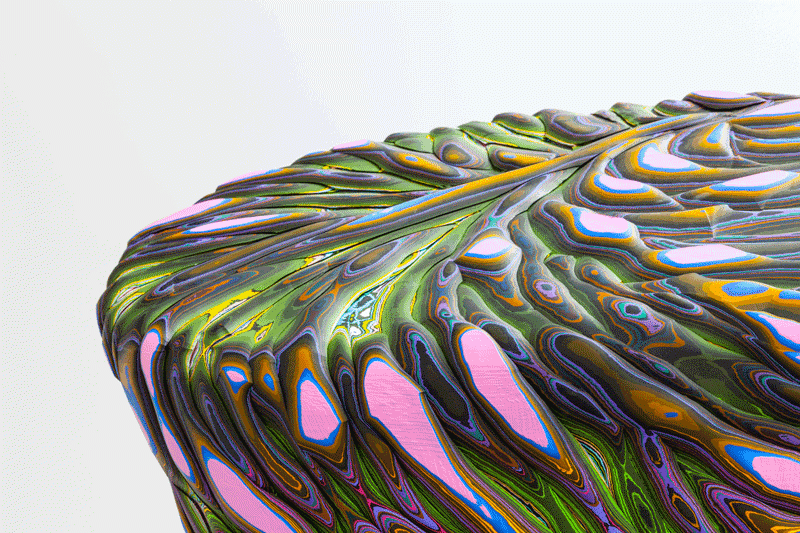Venus LA, Los Angeles, 14 January – 24 February 2017
On election night in the US, after I watched one too many states go red, a friend dragged me to a karaoke bar, where I met with other confused liberals trying to delay the inevitable, at least for just one more Weezer song. What is the role of escapism in a time of political anxiety? Holton Rower’s exhibition Cutaways may just have an answer. Rower’s frenetic sculptures seem at first like nothing more than an excuse to play with a gratuitous, psychedelic palette, but soon open up to reveal wondrous moments and captivating details; the exhibition is an escapade into paint as surface, body as process and colour as medium.
Gobstopperesque colour schemes cloak Rower’s wall panels and geometric sculptural forms. Unlike Ken Price, whose sculptural forms are undulating and sensuous, Rower’s sculptural works recall an old-school, hardedged formalism (shades of Brancusi). Yet, with irreverence to any kind of modernist purity, Rower buries his plywood geometries within layers and layers of acrylic paint, building their surfaces up with such intensity that they become their own pliable, carvable medium. I overheard the gallerist proudly explain that Rower’s process is like skinning an animal – he knifes into his thickly layered surfaces to create mollusklike shapes.
Using cured paint as a sculptural medium is nothing new. What sets Rower’s work apart is his sophisticated use of colour. By carving paint, he is able to unearth sunken layers of deeply toned magenta and rust, which then, a beat later, shift into airy baby-pinks and peaches. Often, as in Very Not Hallow (all works 2016), the darkest tones rest heavy on the bottom of the sculptural forms, with rosy whites flanking the tops, providing a lightness that almost elevates the thing off the ground. These variegated colour schemes are vital to the work’s sense of movement. When they are absent, as in Helpless Champion Reference, which is coloured with a consistent midtone blue, the form (overtly phallic in this case) sits dumbly static.
The wall panels, which appear like scrolls or mandalas, are more overt and simple compositionally. In More Than It Is, a dark blue wave disrupts a serene white sky, recalling Hokusai’s iconic Great Wave off Kanagawa (1829–32). The wall-bound works are meant to be read, not felt, and they lack the dimensional gravitas implicit in the sculptural work.
I felt both liberated and awkward embracing out-and-out escapism in that karaoke bar last November. Leaving the bar, anxiously listening to NPR, any hope I may have had for a different outcome was quickly shattered. How artists will respond to American politics in the next few years remains to be seen, and while there is certainly much work to be done politically, Rower unabashedly asks us to check our baggage at the door. In a time of collective anxiety and an uncertain future, this brand of escapism, so insular and far removed from politicisation, is a welcome reprieve. Hopefully by 2020 artists will not have forgotten abstraction’s potent power to elicit emotion, champion an array of viewpoints and harbour a momentary escape from the outside world.
From the April 2017 issue of ArtReview
